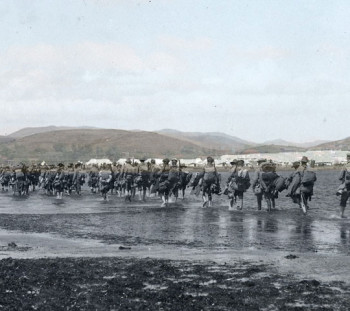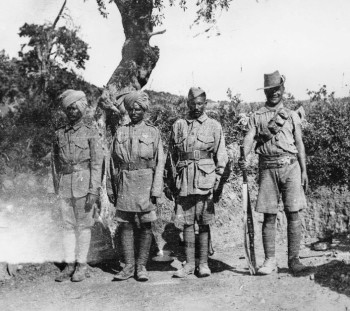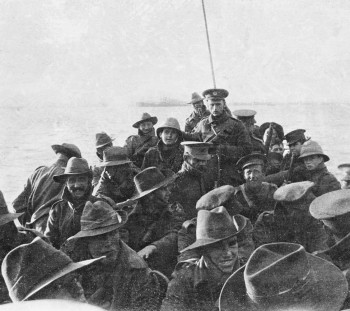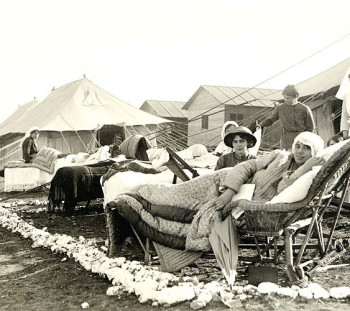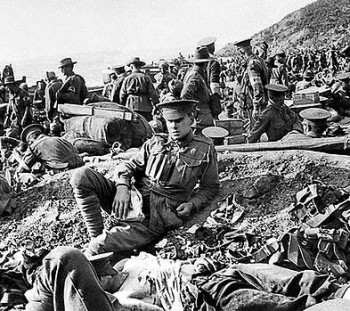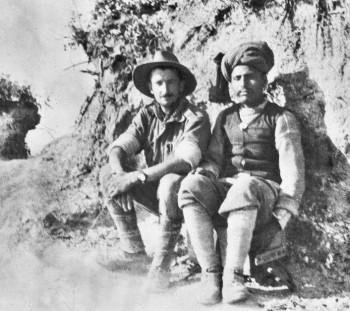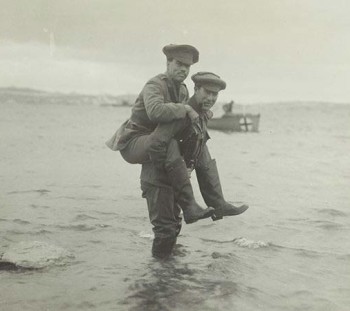Exhibition
The ANZAC in Lemnos
The ANZAC, namely the Australian and New Zeland Expeditionary Force (Australian and New Zealand Army Corps – ANZAC) was formed in late 1914, and initially consisted of two brigardes: the 1st Australian Infantry Brigade (the Australian 1st Division) and the Australian and New Zealand brigade (New Zealand and Australian Division). In addition, the troop consisted of engineering units, paramedic, means of transport and outdoor kitchen.
Australia as a member of the British Commonwealth assisted the military allies in their businesses in Lemnos. The so-called Australian Imperial Force will arrive in Lemnos, via Egypt, in March 1915 (approximately 3,200 men- and more later) and leave via Alexandria defeated and decimated in January 1916. The importance of participation of ANZAC is that being this far away from their homeland, their military presence and inclusion in a group allied forged their national consciousness and strengthened the sense of their national identity.
Among the ANZAC soldiers there were hundreds killed and injured, hospitalized in Lemnos, in field hospital that had been set up in the village Sarpi, Lemnos, and on ships. About 4,000 Australian and New Zealand soldiers were hospitalized in Lemnos with the assistance of 96 Australian nurses. But many of them died and were buried in two cemeteries in Lemnos close to Portianos and Moudros. In total, there are 148 Australians and 76 New Zealand buried soldiers in Lemnos. Most ANZAC soldiers are buried in the second allied cemetery donated by the Greek state to the British, in the northwestern of Portianos. Portianos was their small second home, which enjoyed prosperity in the presence of allies (French called it le petit Paris, because of its beauty and mansions) and for many of them, it became their last home.
In the memory of the deceased both countries established the 25th April, the first day of the landings in 1915, as the ANZAC Day. On this day there are many events in all the cities of both these states, and it is considered as a national anniversary, since in 1915 the residents of both these countries had taken part in another military conflict. Large commemoration events were also realized at the alliance cemeteries of Gallipoli, in Turkey.
Since 1998 some have launched similar events also in Lemnos with the initiative of Australian immigrants in Limnos. The events involve local authorities, the ambassadors of Australia, New Zealand, England, India and other countries whose soldiers are buried in the two alliance cemeteries. Despite the tragic outcome of the campaign Australians and New Zealanders left with noble memories of Limnos, from the care and behavior of the residents. These memories later helped in the smooth integration of migrants of Limnos to Australia. In the memory of their life in Lemnos, a suburb in the state of Victoria was called Lemnos.
An Australian memorial at the entrance of the harbor of Moudros erected as a minimum tribute to the “Heroes of Lemnos” and the strong cultural and historical ties between Australia and Greece. Also, the two roads leading to the Allied Moudros and Portianos cemeteries are named “ANZAC street”.
